Growing and caring for Hawthorn trees can be a rewarding experience. These beautiful and hardy trees offer many benefits, from their attractive flowers to their ability to attract wildlife. By following the proper propagation methods, planting in the right location, employing effective pruning techniques, and providing winter care, you can ensure the health and longevity of your Hawthorn tree.
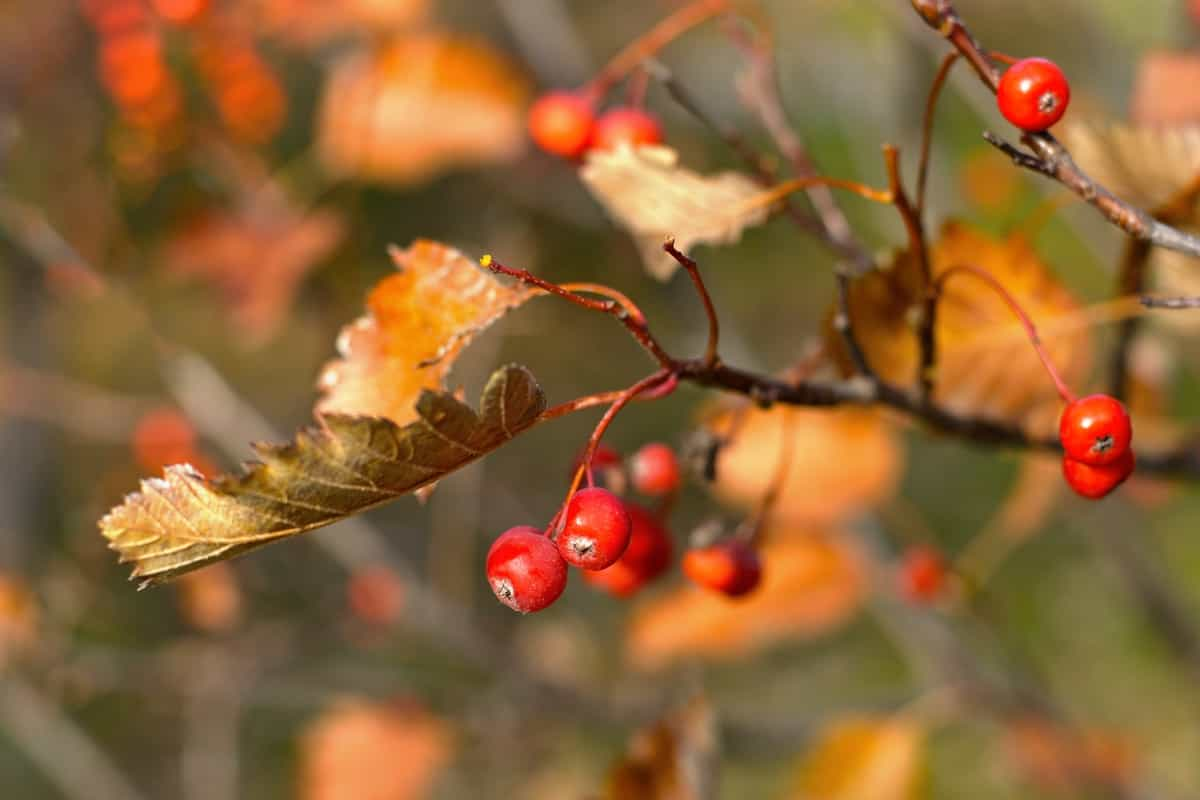
Remember that propagating Hawthorn trees can be done through seeds or cuttings, depending on your preference. Planting them in well-drained soil with full sun exposure will promote optimal growth. Whether you’re looking to enhance your landscape or create a habitat for wildlife, growing a Hawthorn tree is an excellent choice. With proper care and attention, these magnificent trees will thrive for years, adding beauty and value to your outdoor space.
| Name | Hawthorn |
| Common Names | Quickthorn, thornapple, May-tree, whitethorn |
| Sun Exposure | Full |
| Soil Type | Well-drained, loamy |
| Soil pH | Acidic, neutral, alkaline |
| Bloom Time | Spring, summer |
How to Grow Hawthorn Trees
Understanding the Different Varieties of Hawthorn Trees
Hawthorn trees are a diverse group with numerous species and varieties. Each variety has unique characteristics, making it important for gardeners to understand the differences before choosing one for their landscape. One popular variety is the Crataegus monogyna, commonly known as Common Hawthorn or English Hawthorn.
It produces white flowers in spring and red berries in autumn. This variety is highly adaptable and can tolerate various soil conditions. Another well-known variety is Crataegus laevigata, or Midland Hawthorn or Woodland Hawthorn. It features fragrant white or pink flower clusters that bloom in late spring. The fruit this tree produces varies in color from yellow to deep red.
Choosing the Right Location for Planting Hawthorn Trees
Choosing the right location for planting Hawthorn trees is crucial to their long-term health and growth. These trees thrive in full sun, so finding a spot that gets six hours of direct sunlight daily is important. A well-drained soil is also essential for Hawthorn trees, as they don’t tolerate standing water. When selecting a location, consider the tree’s mature size and ensure enough space to grow without being crowded by other plants or structures.
In case you missed it: Best Fertilizer for Indian Hawthorn Plants: Organic, Compost, NPK, How and When to Apply
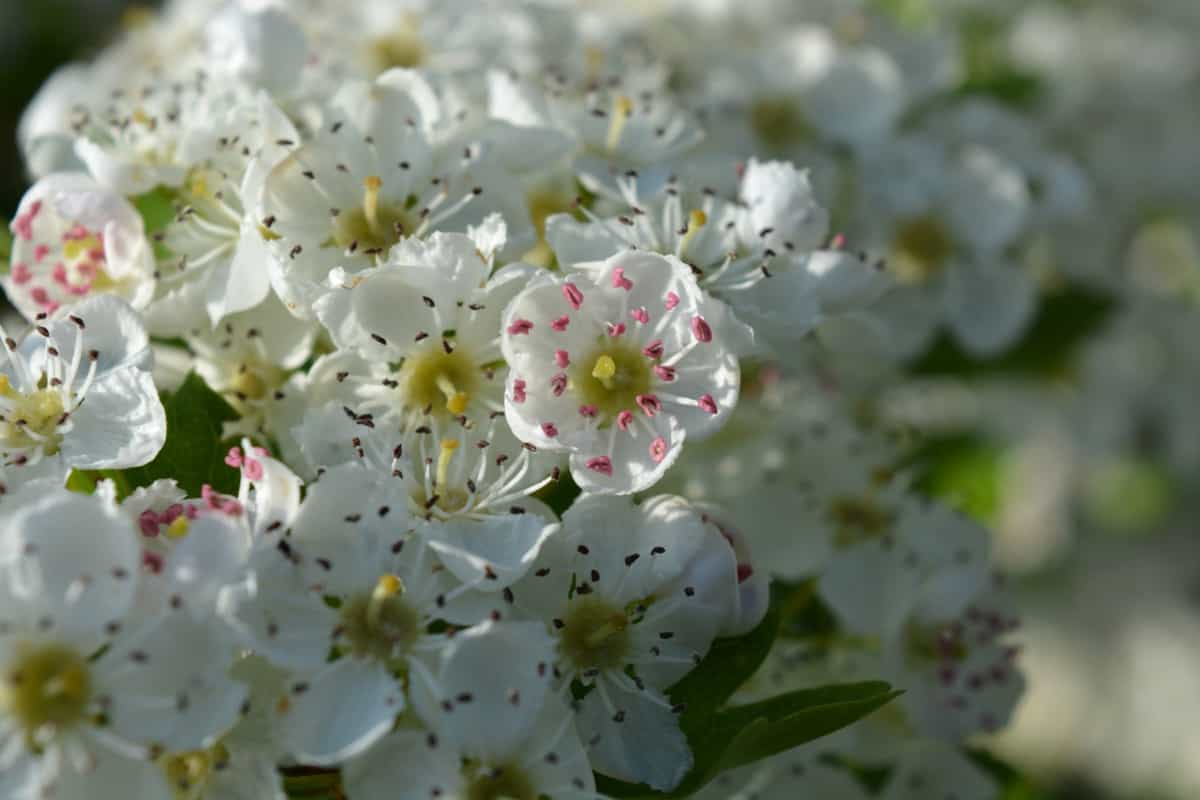
Additionally, pay attention to the soil pH requirements of your chosen Hawthorn variety. Most prefer slightly acidic to neutral soils, but some varieties may tolerate alkaline conditions better. Avoid planting near areas prone to strong winds, as this can cause damage to the tree’s branches and make it more susceptible to diseases. It’s also wise to avoid locations with high concentrations of pollutants or chemicals.
Preparing the Soil for Hawthorn Tree Planting
Before planting, it’s important to assess and improve the quality of your soil. Hawthorns prefer well-draining soil with a pH level between 6 and 7. Start by clearing any existing vegetation or debris from the planting area. Next, loosen the soil using a tiller, breaking up compacted areas. To enhance fertility, incorporate organic matter into the soil. Compost or well-rotted manure can be mixed in at this stage to provide essential nutrients.
It also helps improve moisture retention and promotes beneficial microbial activity. If your soil lacks proper drainage, consider adding sand or perlite to improve its structure. On the other hand, if your soil is too sandy and drains too quickly, adding organic matter will aid in retaining moisture. Before planting, perform a soil test to determine nutrient deficiencies requiring additional amendments, such as lime for acidic soils or sulfur for alkaline soils.
Planting Hawthorn Trees: Step-by-Step Instructions
First, choose a place that gets full sun or partial shade. Hawthorns are adaptable but prefer well-drained soil, so ensure the chosen spot has good drainage. Avoid areas prone to waterlogging. Next, prepare the soil by removing weeds or grasses that may compete with the young tree for nutrients and water. Loosen the soil to improve its texture and promote root penetration.
Dig a hole and place the tree, ensuring it sits at the same depth as in its container or nursery bed. Backfill around the roots with soil, firming gently as you go to eliminate air pockets. After planting, water thoroughly settles the soil around the roots and provides hydration. Apply a layer of mulch around your newly planted Hawthorn tree, leaving space near its trunk base free from mulch. Mulching helps retain moisture and suppress weed growth – key factors for healthy growth.
Watering and Irrigation Tips for Young Hawthorn Trees
During the growing season, young Hawthorns should be watered regularly. Aim to keep the soil evenly moist. Use a slow and steady stream of water at the tree’s base, allowing it to penetrate deeply into the root zone. Avoid frequent light watering as this can encourage shallow root development and make your tree more susceptible to drought stress. Instead, give your Hawthorn trees a good soak once or twice a week, depending on weather conditions. In addition to regular irrigation, consider mulching around your young Hawthorn trees.
In case you missed it: How to Grow and Care for Crocosmia Flowers: A Step-by-Step Guide
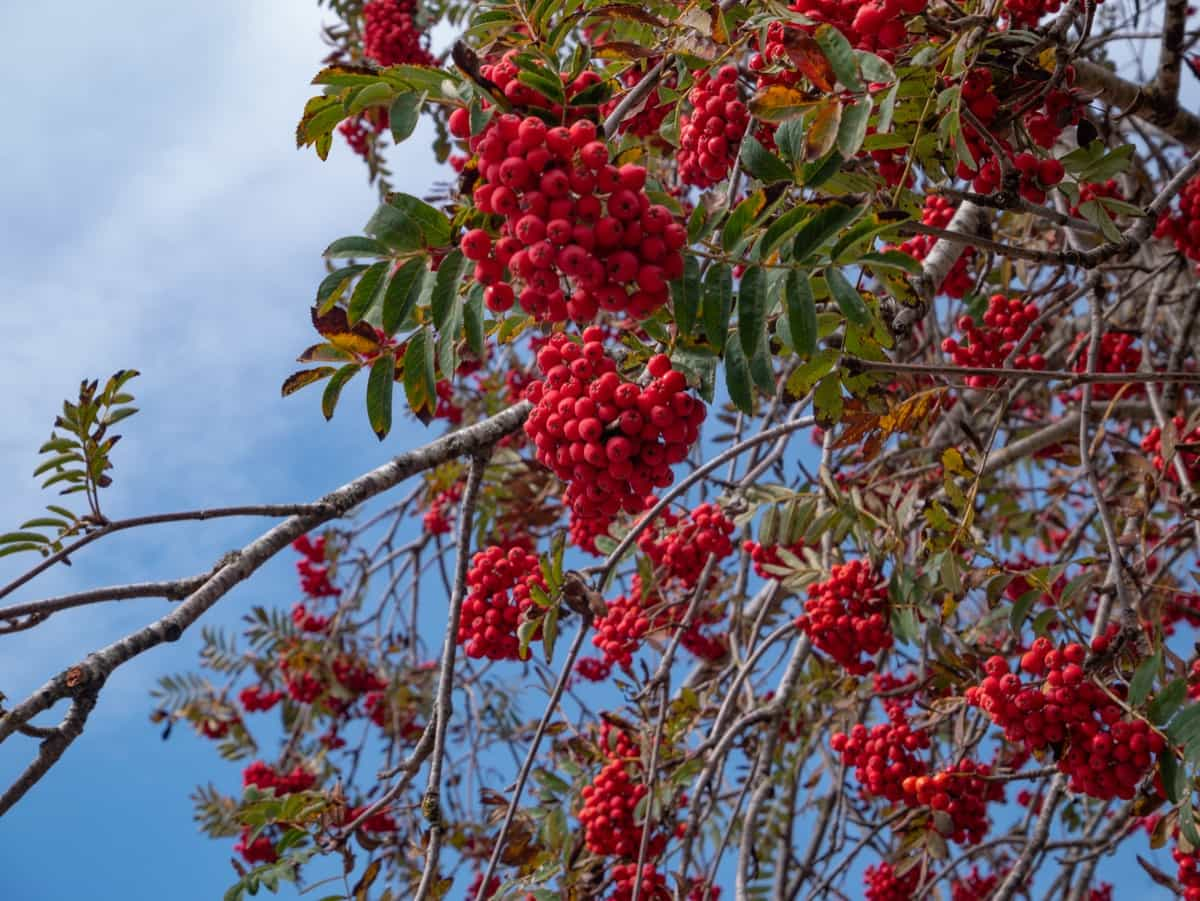
Propagation Methods for Growing Hawthorn Trees from Seeds or Cuttings
One of the most exciting aspects of growing Hawthorn trees is propagating them from seeds or cuttings. This allows you to expand your tree collection and share the beauty of these majestic trees with others. There are two primary methods for propagating Hawthorns: seed propagation and vegetative propagation through cuttings.
When it comes to seed propagation, start by collecting fresh Hawthorn seeds in late summer or early autumn. Remove any pulp from the seeds and then stratify them in the refrigerator for three months. After stratification, sow the seeds in pots filled with well-draining potting mix and keep them moist.
For those who prefer vegetative propagation, take semi-hardwood cuttings in mid-summer when the shoots have hardened but are not fully matured. Dip the base of cutting into rooting hormone powder to encourage root growth, then plant them in containers filled with sand and peat moss. Both methods require patience as Hawthorns can be slow to germinate or root. However, with proper care and attention, you can successfully propagate new Hawthorn trees from either method.
Transplanting Mature Hawthorn Trees: Tips and Guidelines
Transplanting mature Hawthorn trees can be challenging, but you can ensure their successful relocation with the right tips and guidelines. The best time to transplant mature Hawthorn trees is early spring before new growth begins. Before digging up the tree, prepare the new planting hole adequately. It should be deep enough to accommodate the root ball without bending or breaking any major roots.
Be cautious not to damage the root system during excavation. When removing the tree from its current location, use a sharp spade or shovel and dig around the perimeter of the root ball in a circular motion. Carefully lift out the root ball and place it onto a tarp for transportation. Once at its new location, carefully lower the tree into its prepared planting hole.
In case you missed it: How to Grow Ranunculus (Buttercup): Propagation, Planting and Care
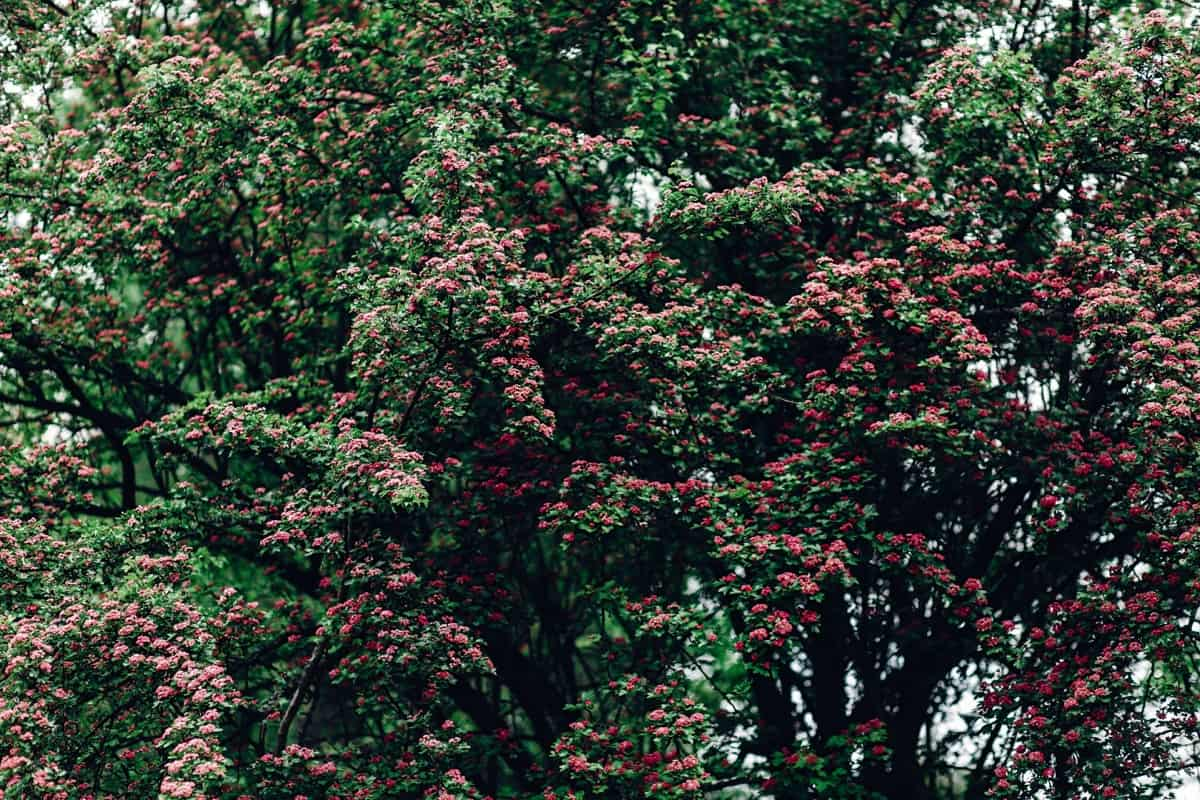
Ensure it is positioned at an appropriate depth – neither too shallow nor too deep – and backfill with soil while gently firming it around the roots. After transplantation, provide ample water to help settle soil particles around newly transplanted roots. Apply mulch around your newly planted Hawthorn tree’s base, as this helps retain moisture and regulate soil temperature.
Mulching Techniques for Healthy Hawthorn Trees
Mulching is an essential technique for maintaining the health and vitality of Hawthorn trees. Applying a layer of organic material around the tree’s base can provide numerous benefits that promote optimal growth and development. Mulch is especially important during dry periods or in regions with limited rainfall. By retaining moisture, mulching ensures that your Hawthorn tree has a constant supply of water, which is crucial for its overall health. Remember to replenish the mulch annually as it breaks down over time. This will maintain its effectiveness in conserving moisture and suppressing weed growth.
Pruning and Training Hawthorn Trees for Optimal Growth
Proper pruning and training techniques are essential for maintaining the health and vigor of your Hawthorn trees. Regular pruning helps shape the tree, promotes air circulation, and prevents the development of weak branches. Training young Hawthorn trees is important to ensure a strong framework supporting future growth. The best time to prune Hawthorns is during late winter or early spring when the tree is still dormant. Avoid cutting too close to the trunk, which can lead to disease.
To train young Hawthorn trees, select a central leader branch as the tree’s main stem. Prune away competing branches that may interfere with its growth. It’s important not to over-prune your Hawthorn trees as this can weaken them and make them more susceptible to diseases. Only remove about one-third of growth each year and avoid excessive thinning unless necessary for improved airflow.
Fertilizing Hawthorn Trees: Dos and Don’ts
Fertilize young Hawthorn trees regularly during their first few years to promote healthy growth and establishment. Use a slow-release or organic fertilizer that will gradually provide nutrients over time. Do follow the instructions on the fertilizer packaging carefully, as applying too much can harm the tree. Don’t over-fertilize your Hawthorn tree, which can cause excessive foliage growth. Don’t use high-nitrogen fertilizers, as these can stimulate abundant leafy growth but may inhibit flowering. Don’t apply fertilizer too close to the tree’s trunk, which can cause root burn.
Dealing with Common Pests and Diseases in Hawthorn Trees
One common pest that affects these trees is the Hawthorn lace bug. These insects feed on the leaves, causing them to turn yellow or brown and drop prematurely. Keeping your tree healthy is important by providing proper care to prevent infestations. Another pesky critter that can wreak havoc on Hawthorns is the apple maggot.
These flies lay their eggs on the fruit, hatching them into maggots that burrow inside. You can use sticky traps or insecticidal sprays when adult flies are active in the summer to protect your tree. In terms of diseases, one common issue for Hawthorns is fire blight. This bacterial infection causes branches to wilt suddenly and turn black as if burned by fire.
In case you missed it: How to Grow Trillium Flowers: A Step-by-Step Guide for Planting to Care

Pruning affected branches promptly can help control their spread, but prevention is key – avoiding overhead irrigation and removing any infected material from the area. Leaf spot disease is another problem that Hawthorns may encounter. This fungal infection causes dark spots on leaves before they eventually drop off. Keeping a good airflow around the tree by pruning away dense growth can help prevent leaf spot disease.
Protecting Hawthorn Trees from Harsh Weather Conditions
Strong winds can cause damage to tree branches or even uproot young Hawthorns. Consider planting windbreaks such as fences or shrubs around your trees to create a barrier against strong gusts. Applying organic mulch around the base of your Hawthorn tree helps regulate soil temperature and retain moisture during extreme heat or cold spells. This extra insulation is crucial for protecting the roots from freezing temperatures in winter.
Providing adequate water for your Hawthorn trees is important during prolonged dry spells. Deep watering once a week will help maintain healthy root systems and prevent stress caused by drought conditions. After severe storms or heavy snowfall, inspect your Hawthorn tree for broken or damaged branches that could risk its overall health and structure. Remove these limbs carefully to prevent further damage.
Winter Care and Maintenance of Hawthorn Trees
One crucial aspect of winter care is protecting Hawthorn trees from frost damage. Wrapping the trunk with burlap or tree wraps can help insulate against freezing temperatures and prevent cracks or splits. Removing any accumulated snow from branches is also essential to prevent breakage. Another key consideration is watering. Though it may seem counterintuitive, Hawthorn trees still require moisture even in winter. Be sure to water deeply before the ground freezes, which will help sustain them through dry periods.
Mulching around the base of your Hawthorn tree is beneficial year-round, particularly during winter. A layer of mulch helps regulate soil temperature, retain moisture, and protect roots from extreme cold. Pruning should be done selectively during late winter or early spring when most growth has ceased. Remove any dead or damaged branches while avoiding excessive pruning that could hinder future growth potential.
In case you missed it: 15 Gardening Mistakes to Avoid This Fall: For Vegetables, Flowers, Fruits, and Herbs
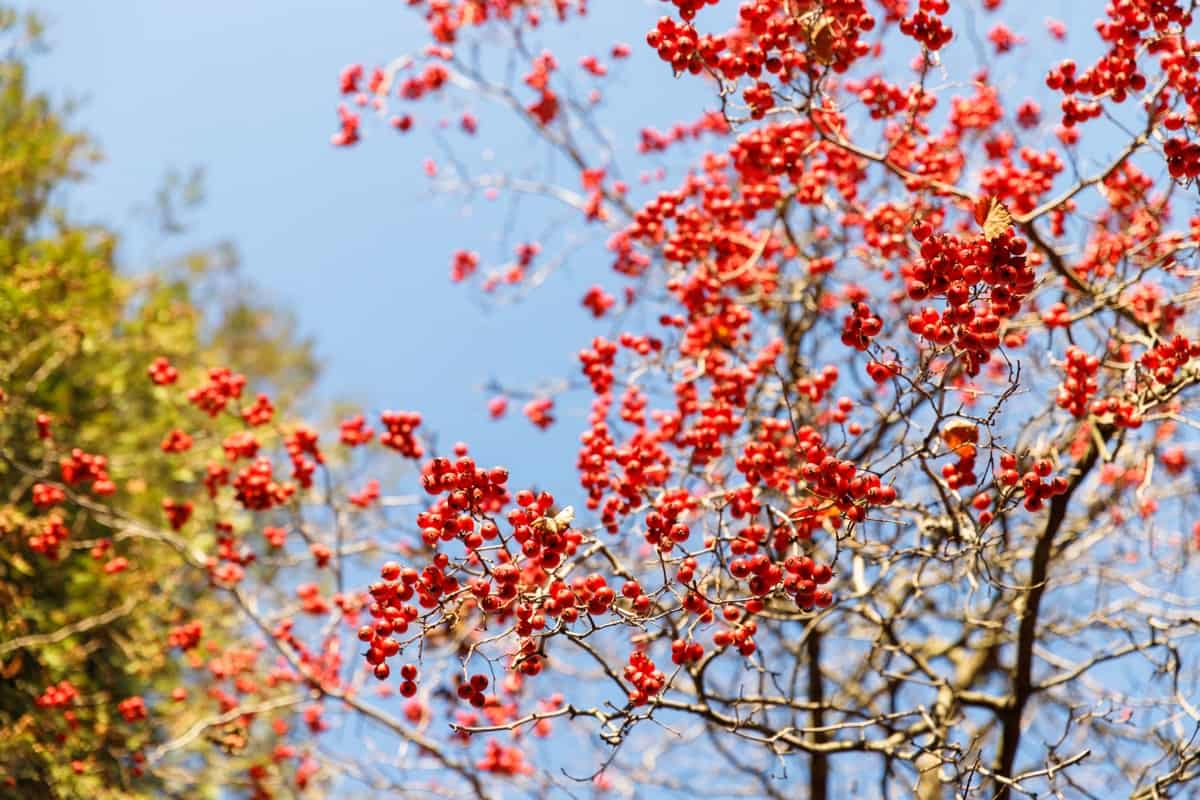
Conclusion
Growing and caring for Hawthorn trees can be a rewarding experience. These trees not only add beauty to any landscape but also provide numerous benefits for humans and wildlife. By following the proper propagation, planting, pruning, and winter care techniques, you can ensure the health and longevity of your Hawthorn trees.
- Broccoli Seed Germination and Selection
- Asparagus Seed Germination and Variety Selection
- Seasonal Flower Gardening: Best Practices for Spring, Summer, Fall, and Winter
- How to Grow Hibiscus from Flower
- Plantation Ideas for Home Decoration: A Beginners Guide
- Flower Garden Designs and Layouts for Beginners
- Planting and Spacing Techniques in Papaya: A Beginner’s Guide
- Growing Gold: Essential Techniques for Planting Pineapples
- How to Make Kalanchoe Plant Bushy: Home Remedies and Solutions
- 11 Reasons Why Your Gardenia is Not Blooming: Home Remedies and Solutions
- Eco Elegance: The Guide to Designing a Drought-Tolerant Landscape
- Gardening on a Slope: Strategies for Hillside Landscaping
- Nourish and Flourish: Top Organic Mulches for Thriving House Plants
- Everything You Want to Know about Indian Mogra Flower: Discover Uses and Growing
- Green Thumb Success: Expert Tips for Cultivating Greenhouse Pumpkins All Year Round
- Maximize Growth & Flavor: The Ultimate Guide to Companion Planting in Herb Gardens
- How to Control Rhododendron Problems Naturally: Home Remedies and Organic Ways to Fix Them
- Natural Magic: The Remarkable Benefits of Cinnamon for Plants
- Best Steps to Revive Dying Tulip with Natural and Organic Treatment
- 10 Reasons Why Your Angel Trumpet is Not Blooming: Remedies and Treatment
- How to Fix Periwinkle Leaf and Flower-Related Problems: Natural Remedies and Solutions
- How to Fix Zinnias Leaf and Flower Problems: Discover Natural and Home Remedies
- Organic Steps to Induce Lemon Tree Flowers: A Comprehensive Guide
- Bloom Booster: Crafting the Perfect Homemade Bougainvillea Fertilizer
- Optimizing Growth: A Guide to Applying NPK Fertilizer for Potted Plants
- 10 Best Homemade Fertilizers for Rubber Plant: DIY Recipes and Application Method
- How to Boost Female Pumpkin Flowers: Effective Steps for More Flowers and High Yields
- Transform Your Indoor Garden: Top Benefits of Pink Salt for Houseplants
- 10 Best Homemade Fertilizers for Peacock Plants (Calathea): Easy DIY Guide
- Unlock Blooms: 9 Reasons Why Your Potted Chrysanthemum is Not Blooming
- 8 Reasons Why Your Potted Hibiscus is Not Blooming: Fix it with Simple Solutions
- Unlock Blooms: 9 Key Reasons Your Potted Frangipani Won’t Flower
- 10 Reasons Why Is My Ice Plant Not Blooming: Remedies and Treatment
- 10 Reasons Why My Potted Hydrangea Not Blooming: Treatment and Remedies
- 10 Reasons Why is My Wisteria Not Blooming: Remedies and Treatment
- 10 Reasons Why is My Goldfish Plant Not Blooming: Remedies and Treatment